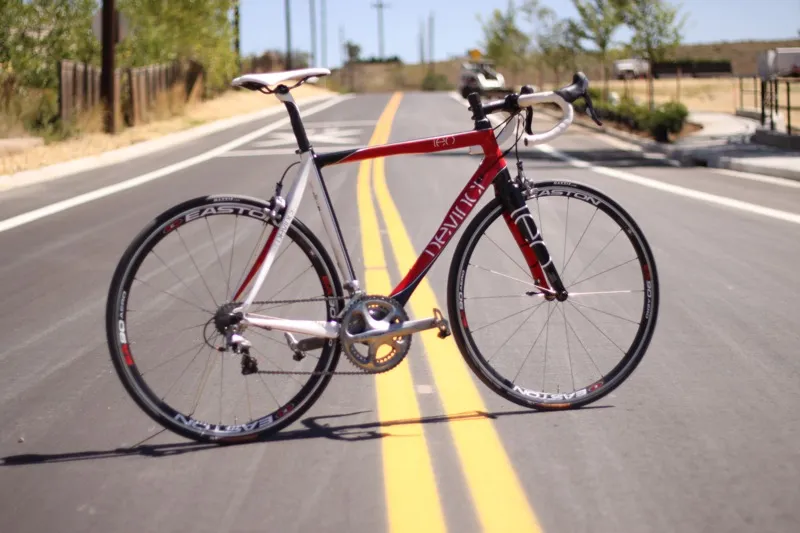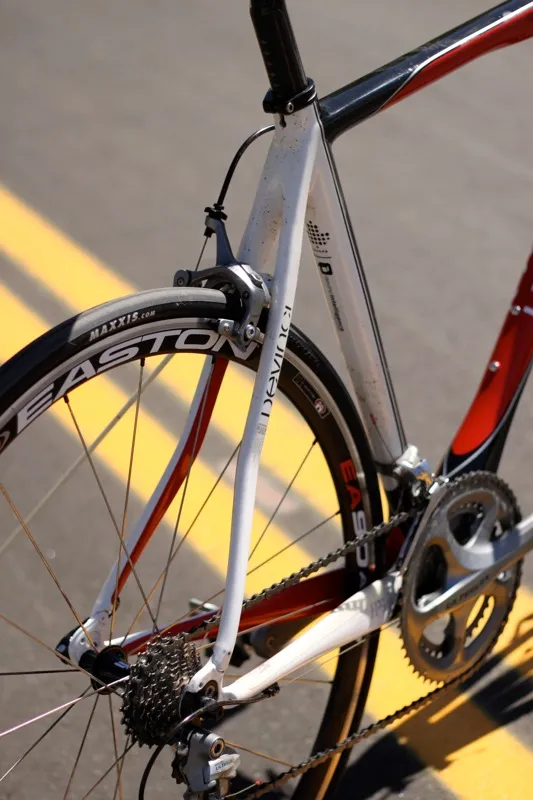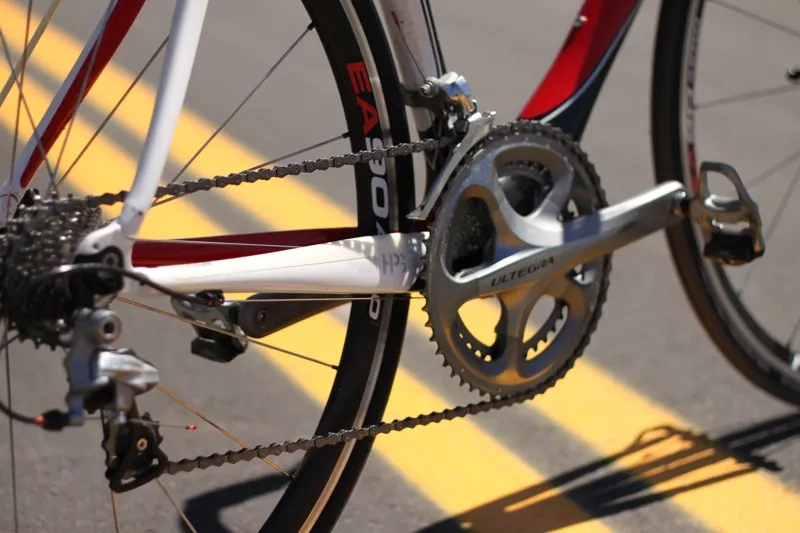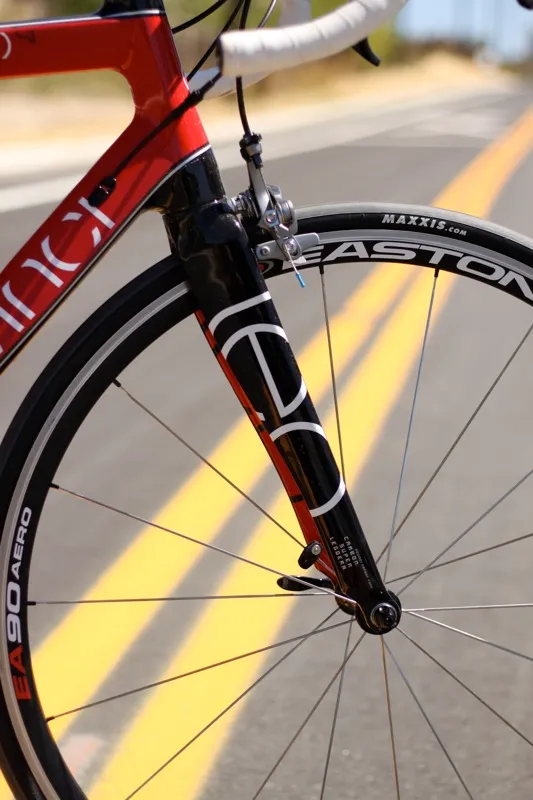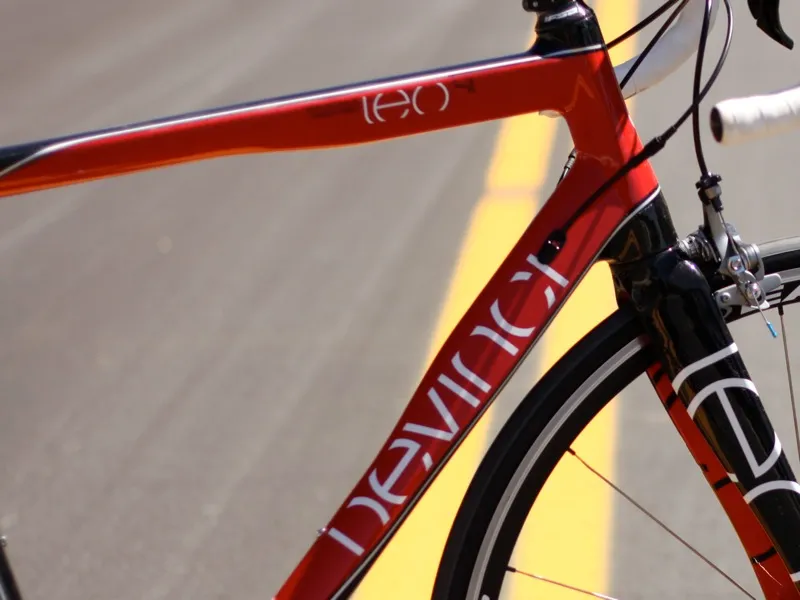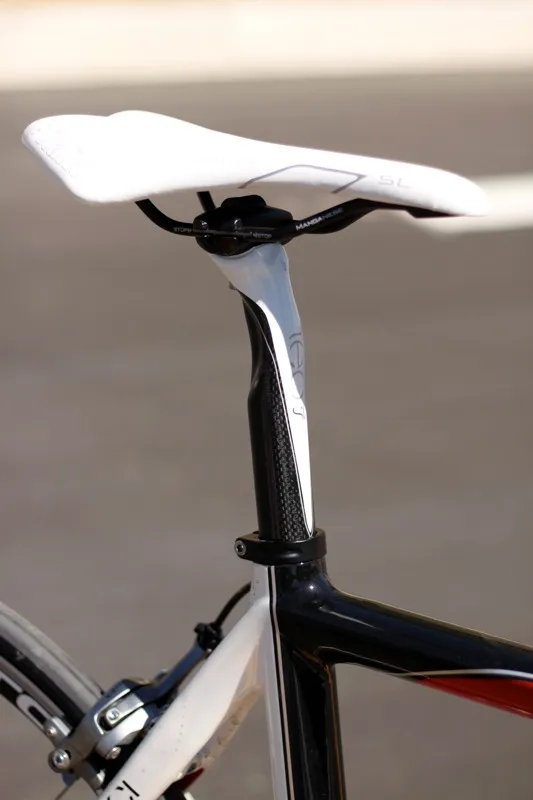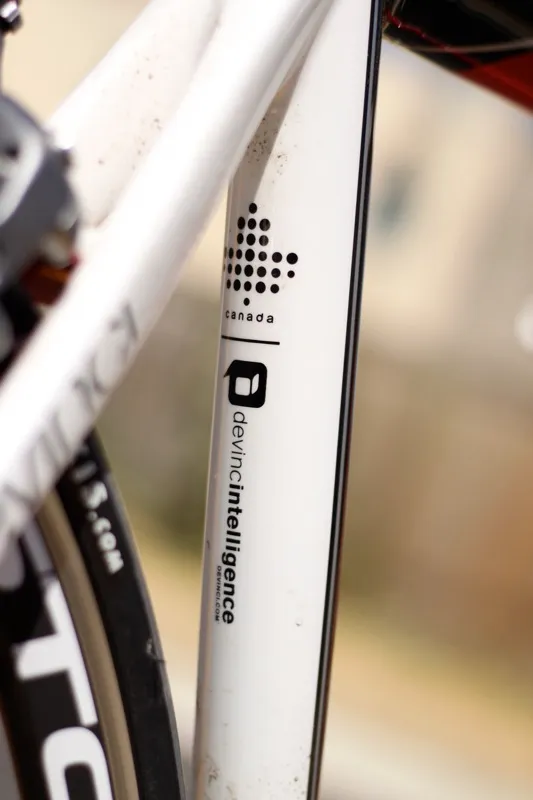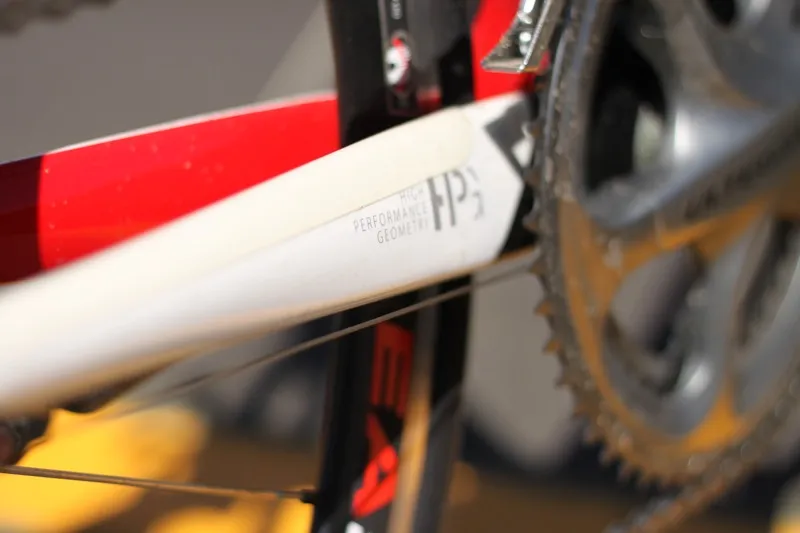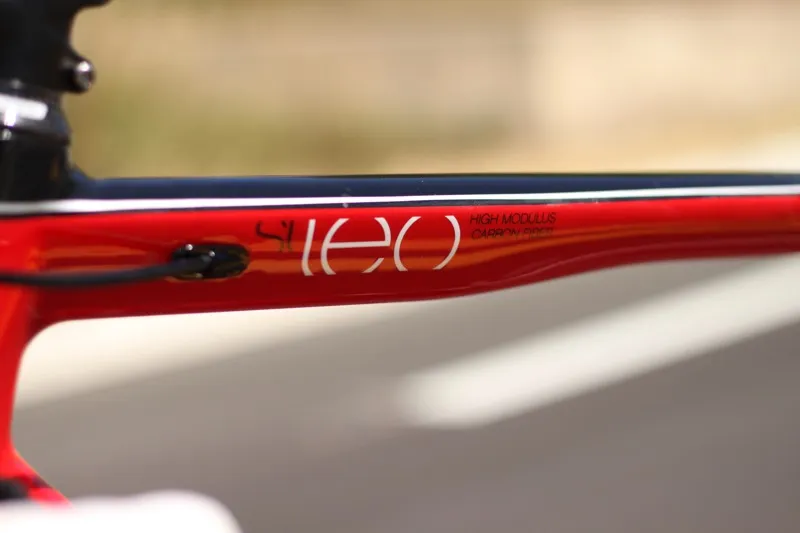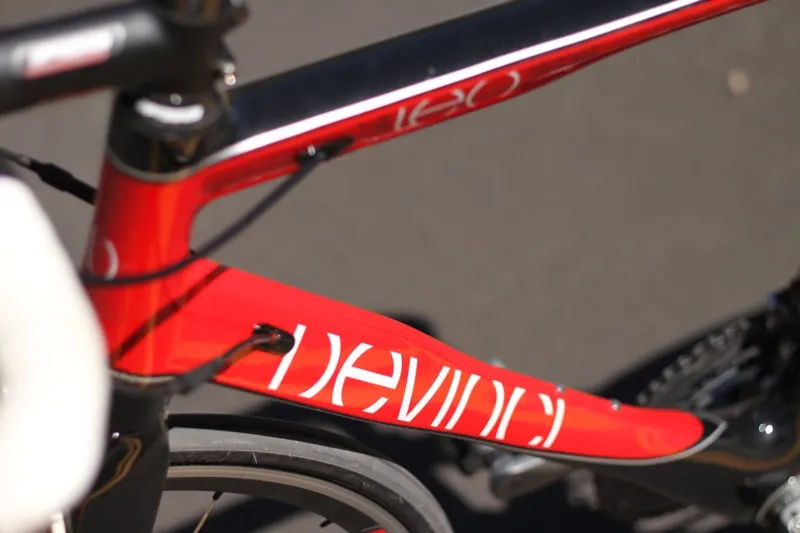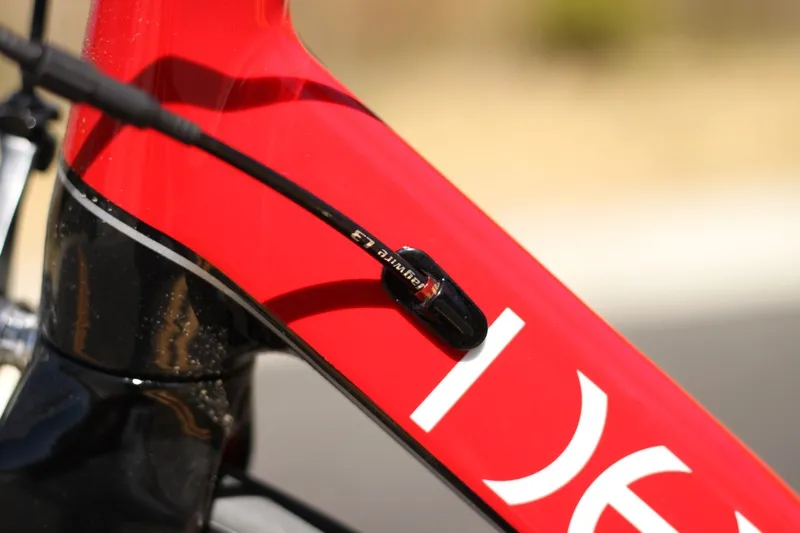Quebec-based Devinci introduced the Leo SL last year. While it proved a solid bike during testing with some positive attributes, its quirks may leave it destined to remain a niche success.
Ride & handling: Stiff and stable, but harsh over longer distances and too tall
From our first ride on the Leo, the lasting impression that we came away with was of an incredibly stable bike with great steering and adequate pedalling stiffness. However, two drawbacks were also immediately apparent: a lack of compliance through the seatstays, and odd front-end proportions.
We picked the large size based on our preferred 56cm top tube length, but found that the 180mm head tube was just too tall for us to adopt our preferred racey position. If you prefer a more upright riding position, this may not be a problem, but armed with this experience we'd size down to the medium and run a long – 130mm – stem.
After riding the Leo for close to five months – over mountainous terrain, windy flats and rough dirt roads – these initial opinions have been confirmed.
The bike is a little heavy for the price – our complete build with Shimano Ultegra and Easton's EA90 Aero wheelset weighed 7.5kg (16.5lb) without pedals – but this is because it's built to handle the rigours of Devinci's strength testing, which is tougher than many other manufacturers' due to the company’s hard learned quality lessons (see below).
The Leo proved stiff in all directions, which is most likely a result of the brand’s strain gauge field and lab bench testing. This is good for larger riders, but as we found, those of smaller stature will notice that the rear of the bike offers a noticeably harsh ride, especially when compared to other bikes with similarly relaxed geometries.
The large aero fork also lacked compliance; it was plenty stiff, though. While all this stiffness makes for admirable handling, we wouldn't classify the ride quality of the Leo as ‘tuned’ or ‘refined’. We'd recommend a test ride of moderate length to decide whether it’s right for you.
One other factor that took away from our overall positive experience with the Leo was the Devinci-branded Leo SL seatpost. The tilt adjustment on this one-bolt post was just too coarse to set our saddle angle properly. This is, however, a simple fix since the Leo relies on a standard, round 31.6mm seatpost. Devinci will switch to FSA posts for 2011.
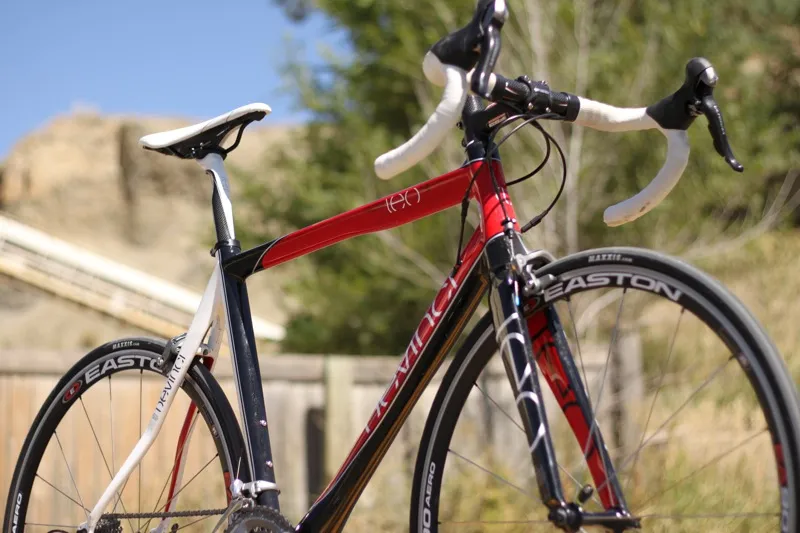
The tall head tube had us wishing for a stem with more negative rise
Frame: Carbon monocoque chassis with a lifetime warranty but some odd tube shaping
Devinci pride themselves on the research and development they put into their bikes, whether they're made from aluminum or carbon. Each model must pass a rigorous test of both instrumented field testing and lab bench testing before it is offered to riders.
This comes from missteps made by Devinci upwards of 20 years ago in aluminium, when flawed heat treatment caused a rash of warranty claims. They've clearly learned their lesson because since 2002, all Devinci bikes – even those designed for downhill mountain bike racing – have come with a lifetime warranty.
The Leo is made in Taiwan using a relatively standard monocoque construction. Devinci say that data gathered during their instrumented road testing was crucial in determining the proper layup for the three different types of carbon fibre plys used.
'Nano-Powder' is added to the resin to bolster the strength of the composite; apparently the powder’s microscopic carbon tubes form bridges between the carbon layers which improve bending resistance and tolerance.
The frame uses design to bolster stiffness as well; it features both a tapered 1-1/8 to 1-1/2in head tube and an BB30 bottom bracket shell. Leo models built with Shimano components – like ours – come with a pressed-in adaptor so they can accept a standard Hollowtech 2 bottom bracket and cranks. As this negates the benefits of the oversize bottom bracket, we'd advise choosing a BB30 crankset to fully capitalise on the frame’s potential.
While the down tube can't be considered aerodynamic, its shape undoubtedly helps maintain the bike’s excellent steering attributes. The seatstays, however, left us scratching our heads. They're very tall, yet relatively narrow. This should makes them resistant to vertical bending and subject to lateral deflection – the opposite of what you'd normally want.
Our large frame weighed in at 1,280g with BB30 adaptor, plus another 22g for the seat clamp and 25g for the bottom bracket mounted cable guide/cover; the fork adds another 427g.

Our test bike came with a threaded adaptor pressed into the BB30 bottom bracket shell
Equipment: Pick most of the parts yourself – and swap that seatpost ASAP!
When it comes to equipment spec, everything from frame colour to groupset is customisable as part of the ‘I am Leo’ programme. Devinci estimate that 800 combinations are available, with kit from Shimano, SRAM, Easton, Mavic, Zipp and more on the menu. Unfortunately, all models come with that same Leo SL seatpost.
For 2011, the Leo colour options will skyrocket from four to 27 different choices. In addition, Devinci will add additional wheel, groupset and cockpit options for next season. And no more Leo SL posts!
Our test model was built up with Shimano Ultegra and Easton’s venerable EA90 Aero wheelset. The Ultegra components performed as expected; the brakes and cranks were impressive, as usual, while shifter performance was underwhelming even when compared to the previous 6600 model Ultegra group.
We use EA90 Aeros as a control test component when bike testing, so we're familiar with their predictable, solid feel, adequate stiffness and reasonable weight. The set strikes us as a good match to the second tier Shimano group.
